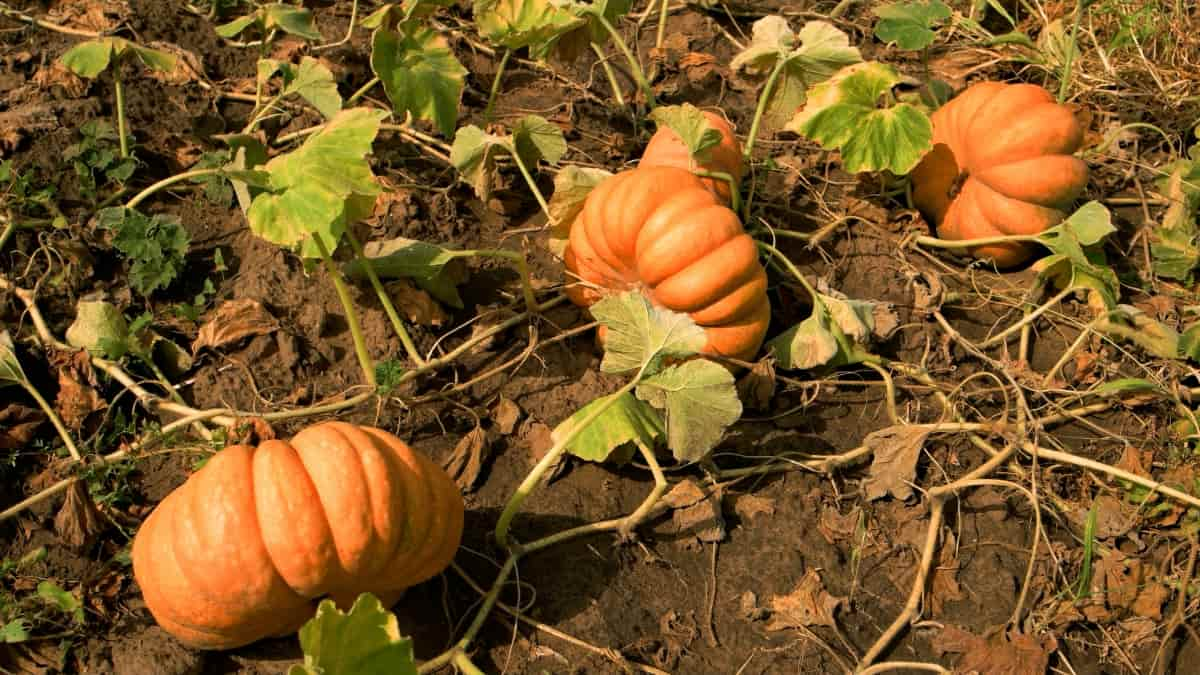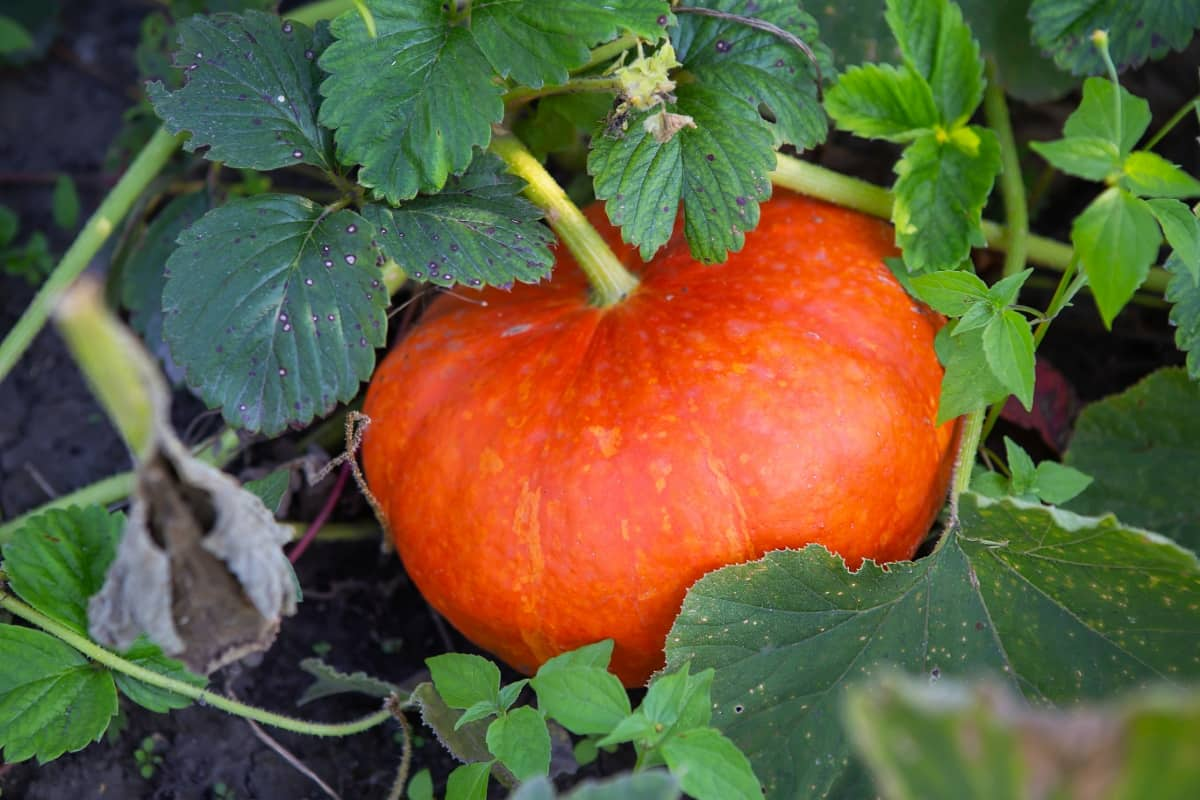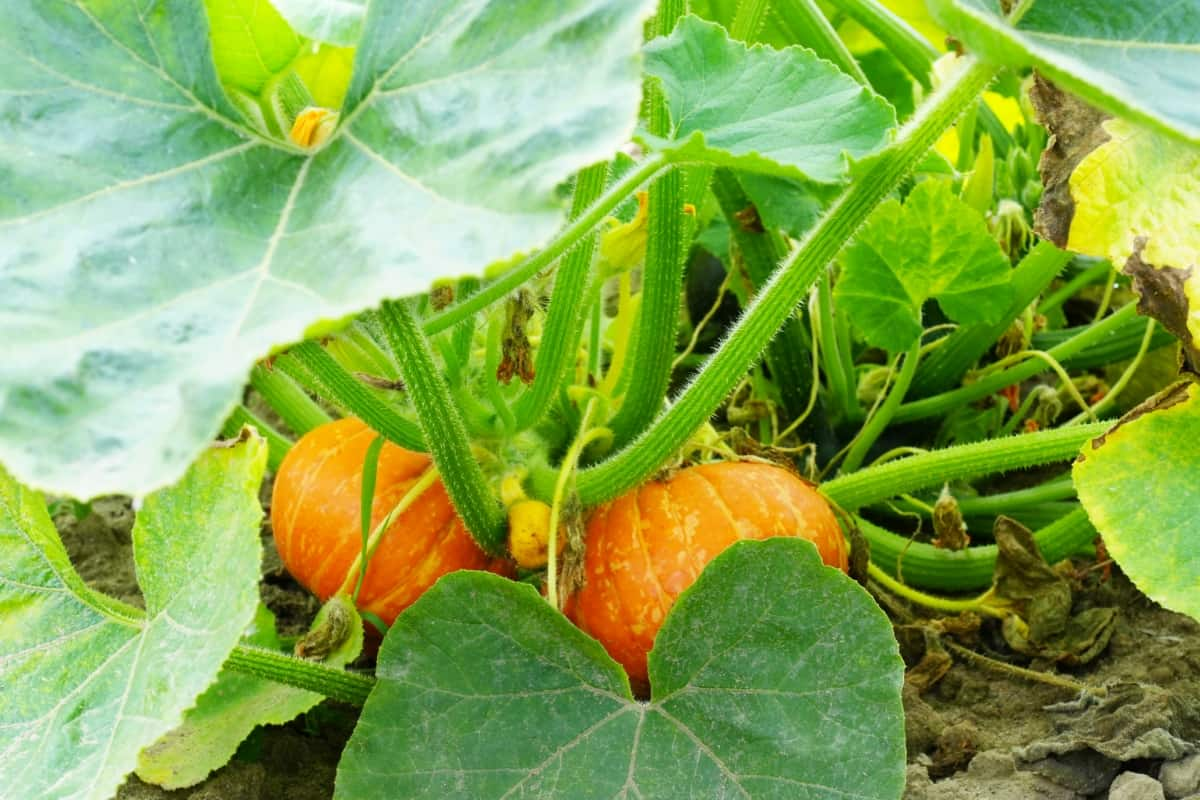Pumpkins are popular crops widely grown for various purposes, such as decorating during the fall season or for the consumption of delicious pumpkin pies. Understanding pumpkins’ life cycle and growing stages is essential for successful cultivation. Each stage plays a crucial role in the pumpkin’s growth, from seed germination to flowering and pollination. This article will brief the different phases of a pumpkin’s life cycle, shedding light on the time it takes for pumpkins to grow and the important processes involved.

How Long Do Pumpkins Take to Grow
Understanding the Stages of Pumpkin Growth
- Pumpkins are fascinating plants that go through several distinct stages of growth. The first stage is seed germination, where the seed absorbs water and sprouts.
- This is followed by the seedling stage, where the plant grows its first leaves and develops a root system.
- The next stage is vegetative growth, characterized by rapid leaf and vine development.
- After this, the plant enters the flowering stage, producing bright yellow flowers. T
- he final stage is fruit development, where the flowers are pollinated, and the pumpkin begins to grow.
- A pumpkin takes approximately 90 to 120 days to reach full maturity. Understanding these stages is essential for successful pumpkin cultivation.
Germination: The First Stage in Pumpkin Growth
Germination is the initial stage in the growth of pumpkins. It is a crucial process where a seed transforms into a seedling. Germination begins when a pumpkin seed is provided with the right conditions: moisture, warmth, and oxygen. When these conditions are met, the seed absorbs water and swells, causing the outer shell to crack open. A tiny root emerges from the seed, anchoring it into the soil, while a shoot emerges towards the surface. As the shoot grows, it eventually breaks through the soil, and the first leaves unfurl. This marks the successful germination and the beginning of the pumpkin’s growth journey.
Seedling Development: Nurturing Young Pumpkin Plants
To ensure their healthy growth, proper care and attention are essential. The first step is to sow pumpkin seeds in well-draining soil, keeping them moist but not overly wet. Once the seedlings emerge, provide them with ample sunlight or artificial light to promote photosynthesis. Maintaining a consistent temperature between 21-29°C is important for their development. Regularly water the seedlings, ensuring the soil remains evenly moist. As the plants grow, transplant them into larger pots or a garden bed, spacing them apart to allow their vines to spread.
Vegetative Growth: Establishing a Strong Pumpkin Vine
To ensure optimal growth, providing the right environmental conditions and care is essential. Start by choosing a sunny spot with well-drained soil. Prepare the soil by incorporating organic matter like compost and ensuring a pH between 6 and 7. Plant pumpkin seedlings, making sure to provide adequate spacing.
In case you missed it: How to Grow Giant Pumpkins from Seeds: Best Time to Plant Pumpkin Seeds

Regularly water the plants, aiming for a consistent moisture level. During the growing season, an application of balanced fertilizer is recommended to promote healthy growth. As the vine grows, provide support by gently tying it to a trellis or fence. Prune any side shoots to encourage vertical growth. By following these steps, you can establish a robust pumpkin vine. You can establish a robust pumpkin vine for a successful harvest with proper care.
Flowering and Pollination: Essential Steps for Fruit Set
Pumpkin flowering and pollination are essential steps for fruit set. The process begins when the pumpkin plant matures, usually around 45-55 days after planting. The plant produces male and female flowers, with the female flowers developing into fruits. Pollination is crucial for a successful fruit set.
It occurs when pollen from the male flowers is transferred to the stigma of the female flowers. This can be done by insects, such as bees, or by human intervention. Once pollination occurs, the fertilized flowers begin to develop into pumpkins. Adequate sunlight, water, and nutrients are also necessary for an optimal fruit set. By understanding these essential steps, pumpkin growers can maximize their harvests.
Fruit Development: Watching Pumpkins Grow in Size and Color
Watching pumpkins grow in size and color is a captivating experience. The transformation is remarkable from tiny green fruits to large, vibrant orange pumpkins. The growth of pumpkins can be divided into several stages. Initially, small pumpkin flowers appear, eventually developing into small green fruits. As the pumpkins mature, they gradually increase in size. The vibrant orange color starts to emerge as the pumpkins ripen.
The accumulation of carotenoid pigments, such as beta-carotene, causes this color change. Monitoring the growth of pumpkins requires patience and observation. Regularly measuring their size and noting the color changes can provide valuable insights into their development. Providing the pumpkins with adequate water and nutrients is also important to ensure healthy growth.
Maturation: Determining when Pumpkins are Ready for Harvest
Determining the right time to harvest pumpkins is crucial for growers to ensure optimal quality and flavor. Several indicators can help determine if pumpkins have reached maturity. First, check the skin color. When mature, the pumpkin’s skin turns a deep, consistent shade of orange or the specific color of the variety being grown. Additionally, the stem should be dry and starting to crack.
In case you missed it: Can You Grow Pumpkins from Store-bought Pumpkins: A Step-by-step Process Guide

Another sign of maturity is the hardness of the pumpkin. Ripe pumpkins will feel firm and solid when gently pressed. Lastly, the vines and leaves around the pumpkin should be dying back. By considering these factors, growers can confidently harvest their pumpkins at the peak of maturity, resulting in a bountiful and delicious harvest.
Ripening and Curing: Enhancing Flavor and Shelf Life of Pumpkins
- Pumpkins should be cured in a warm and dry climate for one to two weeks after harvesting.
- Curing allows the skin to harden, which helps to prevent decay and extend shelf life. It also enhances the sweet and savory flavors of the pumpkin.
- Once cured, pumpkins can be stored in a cool and dark place, ideally at around 10-13°C with a relative humidity(RH) of 50 to 70 percent.
- Proper ripening and curing practices are essential for maximizing the taste and longevity of pumpkins.
Harvesting and Storage: Preserving Pumpkins for Extended Use
To begin, pumpkins with hard skin and deep color should be harvested when fully matured. Cutting the stem rather than pulling or twisting the fruit is important, as this can lead to rot. After harvesting, remove any excess dirt and let the pumpkins cure in a warm, dry place for about two weeks. Once cured, clean the pumpkins with a diluted bleach solution to remove any potential pathogens. Store them in a cool, dry area with good ventilation, ideally at temperatures between 50-55°F and humidity levels around 50-70%. Regularly inspect the pumpkins for signs of decay and use the undamaged ones first.
Life Cycle of a Pumpkin Plant: From Seed to Harvest
The life cycle of a pumpkin plant begins with a tiny seed. This seed is planted in fertile soil during the spring. As the seed germinates, a small shoot emerges from the ground. The shoot grows into a vine, producing leaves and tendrils that help support the plant. Soon, yellow flowers appear, attracting bees and other pollinators.
In case you missed it: 8 Common Problems with Pumpkin Plants: Treatment and Solutions

Once pollination occurs, the flowers wither away, leaving behind small green fruits. These fruits gradually grow larger and turn orange as they mature. When the pumpkins are fully grown, they are ready for harvest in the fall. The life cycle of a pumpkin plant, from seed to harvest, is a fascinating process showcasing nature’s beauty.
Conclusion
understanding the stages of pumpkin growth is essential for successful cultivation. From germination to fruit development, each stage is crucial in the life cycle of a pumpkin. By providing the necessary care and attention at each stage, gardeners can enjoy the beautiful and bountiful harvest of their pumpkins.
- Feed Your Flock for Less: Top 10 Tips to Save on Chicken Feed
- Ultimate Guide to Ossabaw Island Hog: Breeding, Raising, Diet, and Care
- Hatching Answers: The Top 10 Reasons Your Chickens Aren’t Laying Eggs
- Eggs and Economics: Breaking Down the Cost of Raising Backyard Chickens
- Defend Your Greens: Proven Methods to Keep Iguanas Out of Your Garden
- Ultimate Guide to Cinnamon Queen Chicken: A Comprehensive Guide for Beginners
- Ultimate Guide to California Tan Chicken: Breeding, Raising, Diet, Egg-Production and Care
- Ultimate Guide to Marsh Daisy Chicken: Breeding, Raising, Diet, and Care
- 10 Types of Chicken Farming Businesses You Can Start for Profits
\